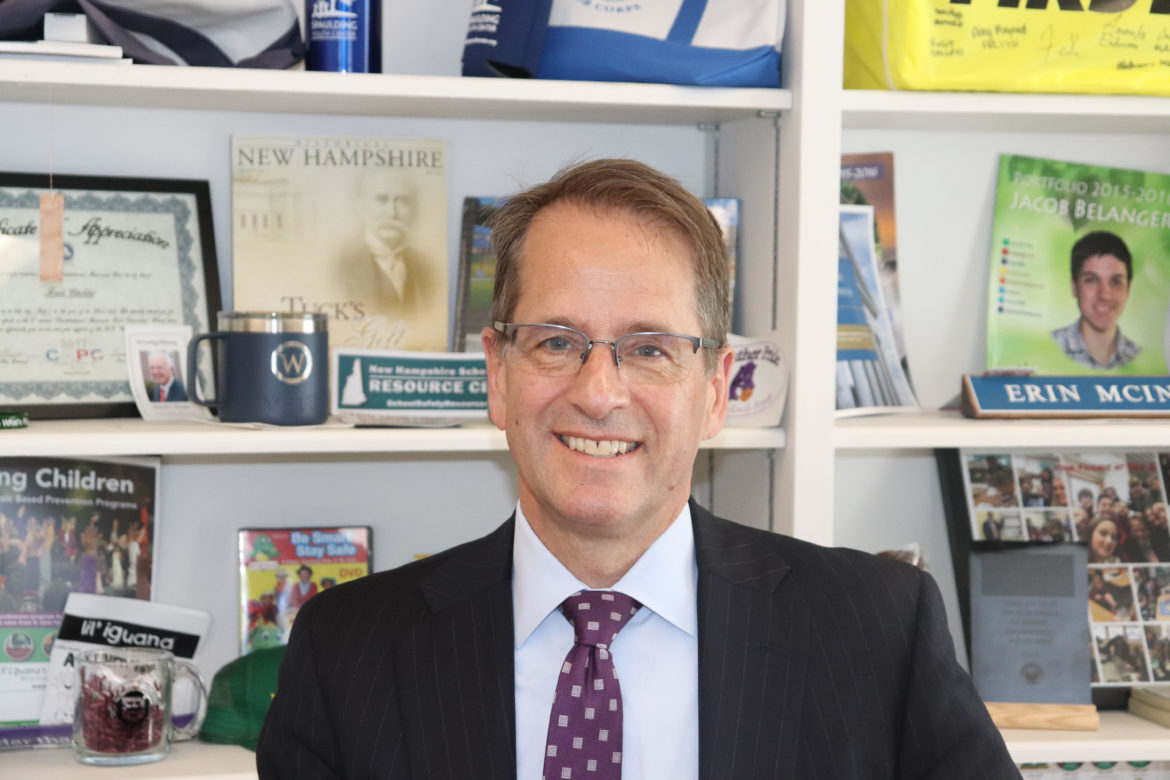By GARRY RAYNO, InDepthNH.org
CONCORD — In three years, the enrollment in the Education Freedom Account program has grown 158 percent, while the cost has increased 174 percent in figures released this week by the Department of Education.
For the current school year, 4,211 students are in the program, up from 3,025 at the same point last year, and from 1,635 for the 2021-2022 school year.
The costs have grown from $8.1 million the first year, to $14.7 million the second year and $22.1 million this school year.
This year the financial threshold to participate in the program was raised from 300 percent of the federal poverty level to 350 percent.
That increases the threshold for the current school year from $59,160 for a family of two, to $69,020, and for a family of four from $90,000 to $105,000 annually.
Once a family qualifies for the program there are no future financial limits on earnings.
Department of Education Commissioner Frank Edelblut, who championed the program before the legislature, was pleased more and more students are participating in the EFA program
“It has been three years since the launch of New Hampshire’s successful Education Freedom Account program, and it is apparent that New Hampshire families are taking advantage of this tremendous opportunity that provides them with different options and significant flexibility for learning,” said Edelblut. “With three years of data under our belt, we know that students are coming and going from the program, which is exactly how it was designed – to allow various options for personal learning needs that may fluctuate from year-to-year based on whatever path is appropriate in the moment.”
The program was sold by Edelblut and others as an opportunity for lower-income parents to find the best educational fit for their children if they have problems within the public school system.
However the vast majority of the money spent through the expansive voucher program has gone to pay the religious and private school tuition of students in those schools prior to the EFA program’s creation.
The program focuses on a small part of the education system in New Hampshire, said Megan Tuttle, president of NEA-New Hampshire, and not the local public schools that the vast majority of children attend.
“Commissioner Edelblut has focused his energy on a small sliver of the population that was never in public schools when we need state leaders to focus on the real issue: the underfunding of New Hampshire’s public education system that disadvantages students, leads to educator shortages, and burdens property taxpayers,” she said. “Let’s be clear–vouchers take scarce funding away from public schools and give it to private and religious schools that are unaccountable to the public. Taxpayer funds should be spent to resource neighborhood public schools to ensure they are desirable places to be and to learn, where students’ natural curiosity is inspired.”
The average grant for the freedom account program is $5,255 per student, up from $4,857 the year before. The legislature raised the base cost of an adequate education from $3,787 per student last school year to $4,100 per student for this year and also increased the additional grants for students on free and reduced lunches.
This school year there are 1,871 students on free and reduced lunches on the EFA program, compared to 1,504 last school year.
The average per student cost of educating a child in public schools is about $20,000, but varies from school district to school district with some spending far more and others far less.
A larger number of EFA students this year left public schools to go into private or parochial schools, 444 students, compared to 282 last school year, and 286 in the 2021-2022 school year.
Overall there are 1,577 new students to the EFA program this school year, while 109 students left the program due to graduation, 75 returned to public schools, and 524 students left the program for other reasons.
The 1,577 new students are 128 more students than the previous year.
When the program first began, the Department of Education projected its first two years would cost about $3.3 million and instead the state paid $22.71 million.
The program draws its funding from the state Education Trust Fund, which also covers the cost of the adequacy grants and additional money called for in the distribution formula for free and reduced lunch, special education and non-English language students, and also covers catastrophic special education costs, school building aid and several other programs.
For the past five or six years the trust fund has been in surplus, after years of running in deficit requiring additional state general fund money to cover state education funding costs.
The program allows “lower income families, immigrants and military families such as ours, the option to do what is best for our children when, as in our case, the public school option failed to meet even basic standards of education,” said Robert Cook, whose two children are enrolled in the EFA program.
While the program is popular with many parents with children who did not succeed in public school environments, critics said it requires guardrails to ensure accountability for the state taxpayer money that is spent on the program and does not have the mechanisms needed to ensure students have an opportunity to receive an adequate education the state Supreme Court says the state must provide to every student in its original Claremont education suit ruling.
The program is administered by the Children’s Scholarship Fund NH which receives 10 percent commission to oversee the EFA program.
Garry Rayno may be reached at garry.rayno@yahoo.com.






